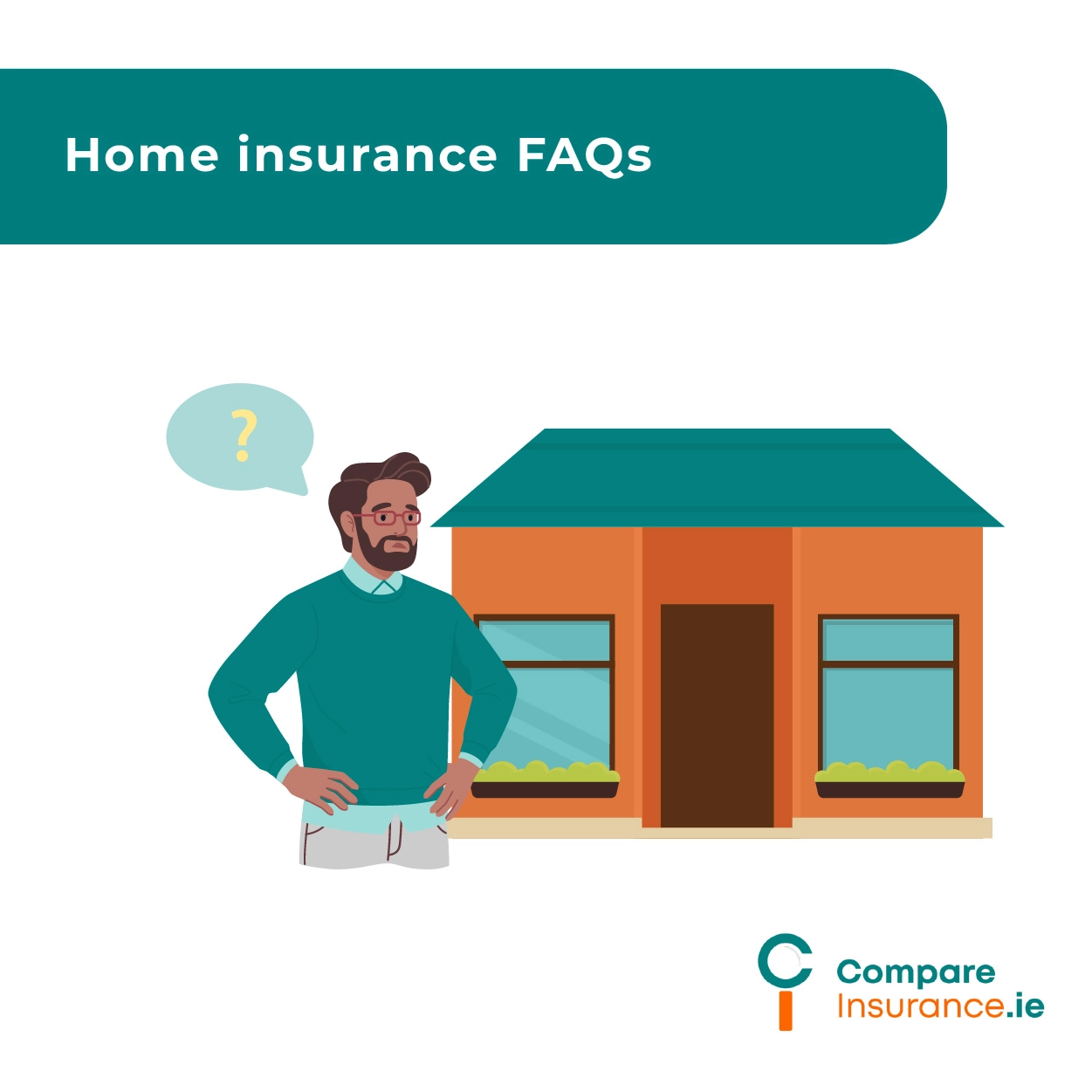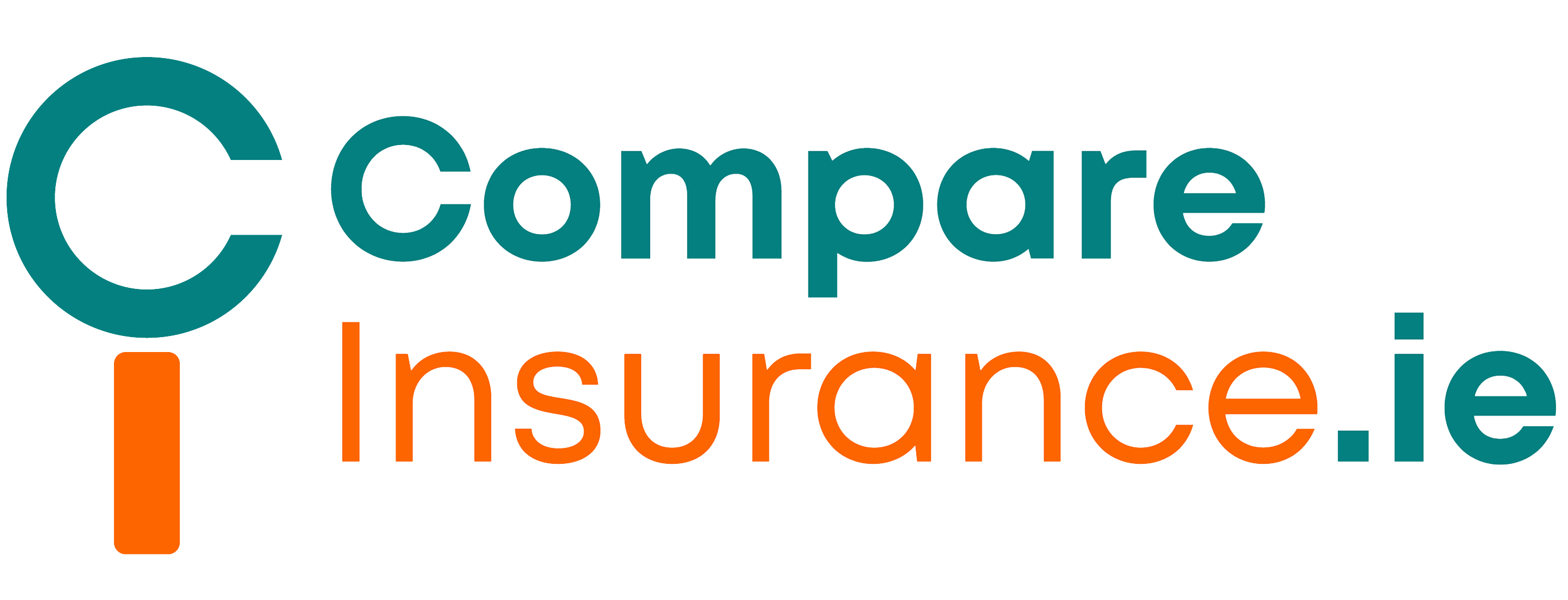A: Home insurance may be purchased as buildings cover, contents cover, or a combination of both.
Buildings cover protects the structure of your home, such as the roof, walls, and windows and will cover the cost of rebuilding the building should an insured event occur.
Contents cover protects your belongings, such as furniture, appliances and electronics, jewellery, and money.

A: As a tenant, your landlord should have insurance to cover the building in which you live, but you should protect your own belongings with contents cover.
Home insurance that covers contents only is often sold as tenant’s or renters insurance and may also include cover for your liability should the landlord’s property be damaged.
A: It is essential that you get an accurate figure for the true rebuild cost of your home, especially in recent years when the costs associated with building and repair work has increased dramatically.
You can get a survey carried out by a chartered surveyor or use the SCSI’s rebuild calculator to calculate the cost of rebuilding your home.
Remember that the rebuild cost of your home is not the same as the market value which is determined by factors such as the cost of the site on which it is built and property prices in your area etc. as well as the cost of the physical structure.
A: It is important to ensure that you calculate the full value of your home’s contents as the replacement cost of your belongings may be higher than you think.
Rather than use a percentage of your buildings cover as a value for your home’s contents, go room by room and add up the cost of furnishings, carpets, clothes and jewellery, as well as appliances and electrical items. Don’t forget to include the garage or shed and include the value of gardening or sporting goods and bicycles also.
A: Flooding can occur due to escape of water from faulty or frozen pipes or plumbing fixtures or flooding can mean flooding due to weather events or external water entering the home.
Most home insurance policies will offer protection from the former but flooding due to storm damage or geographical location may not be covered by your home insurance policy, depending on where you live.
As cover for flooding can vary it is important to check the details of your home insurance policy to ensure that you are adequately protected.
A: Landlord’s insurance offers protection for a property that you let to tenants. This will cover the structure of your property as well as any fixtures and fitting which belong to you within the property.
Landlord’s insurance should also protect against third party liability and may include cover for loss of rent should the property be uninhabitable due to an insured event, such as fire or storm, for example.
A: Generally, home insurance does not cover properties that are unoccupied for more than 4-6 weeks per year as the risks, such as fire, theft, and flooding, are increased when the home is empty.
If your home is unoccupied for a longer period, you have a holiday home or your home is undergoing renovations and will be unlived in for the duration, then it is strongly advised that you contact your home insurer and inform them or that you make specific arrangements.
Holiday home insurance, for example, will cover a holiday home that is empty for a portion of the year, provided certain conditions are met.
A: ‘All risks’ cover is optional, additional home insurance cover for items that you take outside the home such as laptops, jewellery, and bicycles, for example.
Your home insurance may include a general value (e.g. €1,000) to cover such items but if you have single items of higher value then they will need to be ‘specified’ on your home insurance policy in order to be covered. You may need to provide purchase receipts or a valuation for higher value items to specify them on your policy.
A: Accidental damage is usually offered as an optional extra on home insurance policies and protects damage or loss caused by accidents in the home.
Sometimes accidental damage is standard for some items on the policy, such as electronic or audio visual equipment, but it is important to check the cover on your policy to see what exactly is covered.
A: An excess is the amount that you must pay yourself for repairs or replacement of items before your insurance policy covers you.
For example, your policy may include an excess of €250 which means that you must pay the first €250 of any claim you make.
The excess varies between home insurance policies and may also vary within policies, for example a policy with a €250 excess may include a €1,000 excess for water damage or a lower excess for ‘all risks’ items.
You may find that taking on a higher voluntary excess will lower your home insurance premium, but beware taking on an excess that is too high as you will need to be able to pay this amount yourself should you need to make a claim.
A: Standard home insurance is usually offered under certain assumptions about its construction, such as having a limited percentage of the roof being flat or being under 100 years old.
If your property is an older or listed building, timber framed, or built to an unusual design, such as an eco home or with a flat roof, for example, then you may need specialist home insurance.
An insurance specialist, such as a Compare Insurance advisor, may be able to obtain specialised or non standard cover for your home. It is essential to ensure that your property is adequately protected even if it is of non standard construction.
A: Home insurance generally covers outdoor items, such as garages or sheds, paths, and boundary walls or fences.
Outdoor contents such as garden furniture, ornamental features, and outbuilding contents such as garden or outdoor equipment may also be covered depending on the details of your policy.
Underinsurance occurs when the amounts covered by your home insurance are not sufficient for the loss or damage to your home following an event.
A: An example would be where a building is insured for a rebuild cost of €168,000 but the actual cost of a full rebuild following a fire, for example, would be €280,000 (40% underinsurance). If your home is 40% underinsured, this will also mean that a partial rebuild will not be fully covered by the policy either. For example, a kitchen rebuild of €80,000 following a fire will only be covered for €48,000 if the home is 40% underinsured.
Ensure that your home is insured for the full rebuild cost and review your cover regularly, especially after any home renovation or upgrade.
Contents can also be underinsured, so ensure that items are insured for the full value of a new replacement. You may need to keep receipts or photos of valuable items and bear in mind cost of living price increases when calculating the value of your home’s contents.
First, have your property’s Eircode, the rebuild cost, the total estimated contents value, and details of any claims-free years ready.
Compare Insurance can help you to get a great quote for home insurance online with the minimum of hassle. We work with leading home insurers to ensure that you get the most competitive quote.
Fill in our online assessment and let us do the hard work so you can see how much you could save on home insurance today.
Compare home insurance quotes from every insurer.
Take our 90-second online assessment and get the best home insurance quotes on the market. Our vetted home insurance partners are regulated by the Central Bank of Ireland and will outline the various options available to you.


